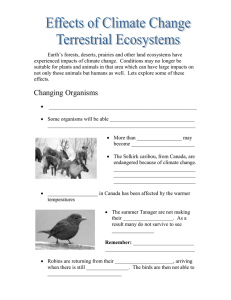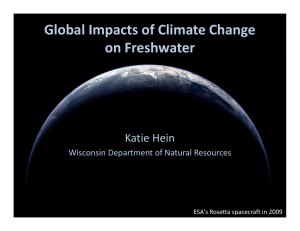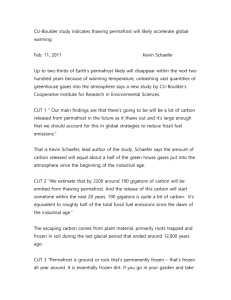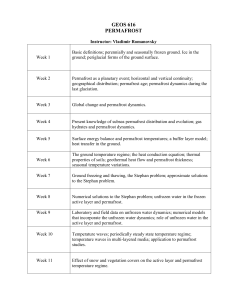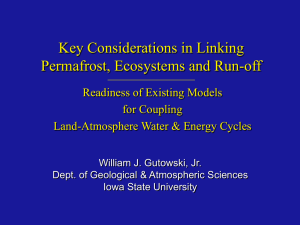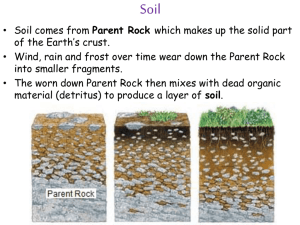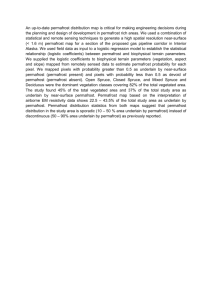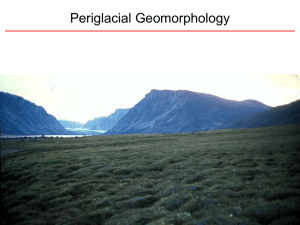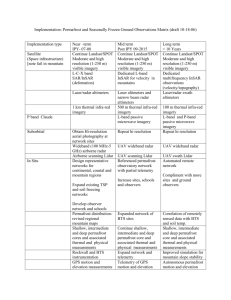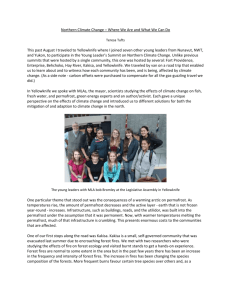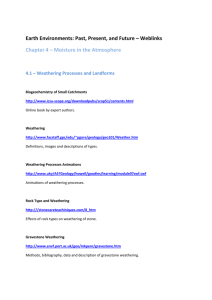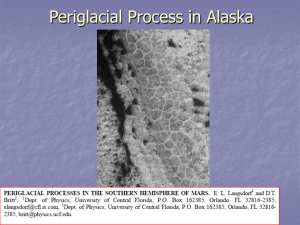PERIGLACIAL PROCESSES AND LANDFORMS
advertisement
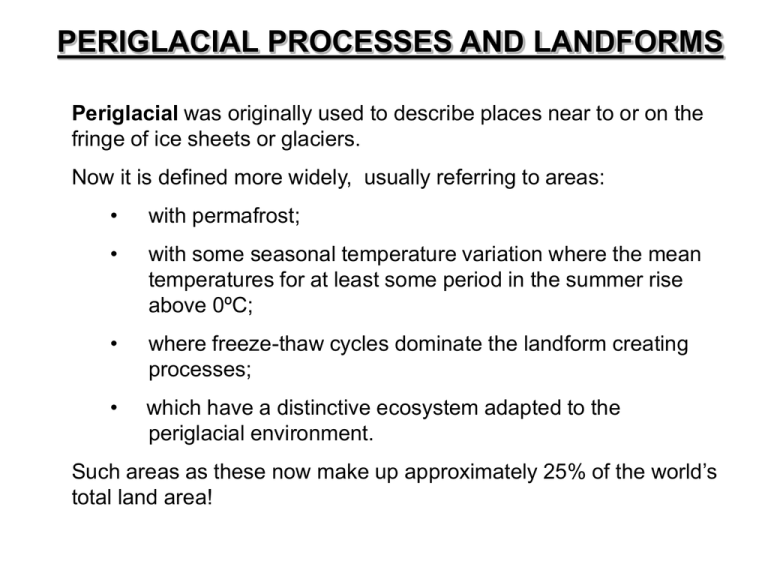
PERIGLACIAL PROCESSES AND LANDFORMS Periglacial was originally used to describe places near to or on the fringe of ice sheets or glaciers. Now it is defined more widely, usually referring to areas: • with permafrost; • with some seasonal temperature variation where the mean temperatures for at least some period in the summer rise above 0ºC; • where freeze-thaw cycles dominate the landform creating processes; • which have a distinctive ecosystem adapted to the periglacial environment. Such areas as these now make up approximately 25% of the world’s total land area! Frost-shattered granite bedrock (felsenmeer), northern Manitoba. This is a closeup of frost-shattered bedrock, consisting of angular blocks of Precambrian granite. Extensive areas of blocks are called felsenmeer. The shattering has occurred in permafrost terrain, near treeline. • Stone circles on Melville Island, Northwest Territories, Canada. The patterns on the ground consist of circular arrangements of slabs (foreground) and small domes of mud with stony rims. The features were produced by the churning action of frost forming in unsorted glacial till and regolith. Countless freezethaw cycles sorted the surface debris, continually heaving the finer matter to the surface, and leaving the coarser fragments around the edges Ice-wedge polygons in peatland, Hudson Bay Lowlands, Manitoba. Splendid examples of ice-wedge polygons, a form of patterned ground, are shown above. They occur in the permafrost peatlands of the Hudson Bay Lowlands, which are composed mainly of dry sphagnum. Brown polygons mark the location of massive ice wedges that extend from the surface down to 2 or 3 m. • Pingos on Prince Patrick Island, Northwest Territories, Canada. These features are up to 100 meters across. Eventually the ice core will grow to such a size that it will rupture the sediment cover and become exposed. Scientists are unsure where all of the free water is coming from and how it is conducted through the frozen sediments and rock to make these features grow. • Mackenzie river delta pingo • Ice exposed in a Pingo in the MacKenzie river delta PERIGLACIAL PROCESSES AND LANDFORMS Key Terms • • Permafrost: Permanently frozen ground where soil temperatures have remained below 0 °C for at least 2 years Continuous Permafrost: Summers so cold that there is only a very superficial surface melting of the ground. Has been estimated to reach up to a depth of 1500 metres. Mean annual air temperatures of below -5 °C all year, and as low as -50 °C. • Discontinuous Permafrost: Found is slightly warmer areas so there are islands of permanently frozen ground separated by small pockets of unfrozen less cold areas. Slightly warmer zones due to proximity of surface water (rivers, lakes, the sea). Mean annual temps of between -1 °C and -5 °C PERIGLACIAL PROCESSES AND LANDFORMS • Sporadic Permafrost: Found when mean annual temperature is just below 0ºC and the summer temperatures reach several degrees above but isolated pockets of permanently frozen ground remain below the surface. • Active layer: Summer temperatures sufficient to melt the surface layer of permafrost. This layer can be very mobile. It varies in thickness depending on latitude and vegetation cover. • Talik: Any unfrozen material within the permafrost zone. PERIGLACIAL PROCESSES AND LANDFORMS 1. Look at the map on page 130 – describe and explain the distribution of: Continuous permafrost Discontinuous Permafrost Sporadic permafrost 2. Why don’t we get permafrost areas to the same extent in the Southern Hemisphere? Sort the cards to match the definitions Classify the cards into sub groups The Physical processes that occur in Periglacial areas
